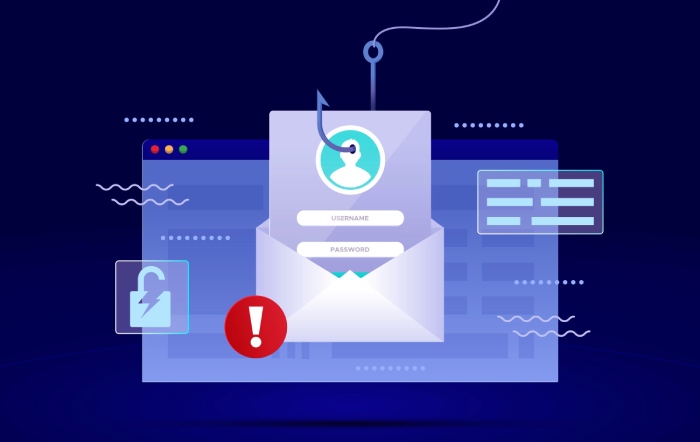Spear phishing represents a highly targeted subset of phishing attacks designed to deceive specific individuals or organizations by masquerading as trustworthy sources. Unlike broad phishing campaigns that cast wide nets, spear phishing leverages deep reconnaissance and social engineering tactics to craft personalized email messages. These emails often bypass traditional email security measures and exploit human vulnerabilities with compelling pretexts, leading to business email compromise (BEC), credential theft, or malware deployment.
Key characteristics include the use of authentic-looking sender addresses often countered by spoofing prevention measures, carefully tailored content referencing business operations, and an aim to bypass detection through email filtering and sandboxing technologies. Attackers increasingly utilize advanced persistent threat (APT) techniques, integrating machine learning and artificial intelligence security to evade threat detection systems embedded in secure email gateway solutions.
Common Targets and Attack Vectors in Spear Phishing
Spear phishing commonly targets executives, finance personnel, human resources, and IT administrators due to their access to sensitive data and high-level authentication privileges. Attack vectors predominantly involve deceptive emails containing malicious attachments or embedded phishing URLs designed to harvest credentials or install ransomware. These emails can evade TLS security and email encryption protocols by exploiting zero-day vulnerabilities or manipulating endpoint protection tools.
Cloud security environments, such as Google Workspace Security and integrations with cloud access security broker (CASB) platforms, face elevated risks due to the proliferation of remote work and reliance on cloud infrastructure. Attackers also exploit social engineering to trigger trust and urgency, circumventing identity and access management (IAM) systems without raising suspicion. Cyber defense teams often deploy phishing simulation and threat intelligence solutions from vendors like Cofense and Proofpoint Targeted Attack Protection to identify susceptible users and refine detection capabilities.
The Risks and Impact of Spear Phishing on Businesses
The ramifications of successful spear phishing campaigns are profound, impacting the confidentiality, integrity, and availability of business assets. Financial losses escalate due to fraudulent wire transfers, intellectual property theft, and ransomware attacks demanding high-value payments. Incidents of business email compromise erode organizational trust, damage brand reputation, and expose companies to regulatory penalties for data breaches compromised through ineffective data loss prevention protocols.
Spear phishing frequently serves as an entry point for advanced persistent threats, enabling attackers to establish long-term footholds and conduct cyber threat hunting evasion. Compromised endpoints facilitate lateral movement across segmented networks, undermining network security and complicating incident response. Organizations that employ security information and event management (SIEM) solutions such as IBM Security or Palo Alto Networks benefit from enhanced incident detection and security analytics, but continuous vulnerability management and security policy enforcement remain critical.
Identifying Spear Phishing Emails: Key Indicators and Red Flags
Recognizing spear phishing emails requires a combination of technological controls and vigilant user scrutiny. Key indicators include discrepancies in email domains or subtle spoofing attempts detectable through secure email gateway and phishing URL detection technologies. Unusual tone, urgent requests for confidential information, or abnormal email reply paths often signal social engineering attempts. Maintaining verified contact lists also strengthens defenses. Running bulk email verification ensures fake or compromised addresses are removed, reducing the risk that attackers exploit them in spear phishing attempts while improving overall email security.
Advanced solutions from Barracuda Networks, Mimecast, and Microsoft Defender incorporate AI-powered behavioral analytics and user behavior analytics to flag atypical email patterns. Phishing simulation platforms like KnowBe4 enable organizations to mimic spear phishing campaigns, enhancing real-world detection capabilities. Email security features such as robust email filtering, TLS security enforcement, and encryption technology help reduce exposure, but trained human eyes remain indispensable in recognizing nuanced signs.
Additionally, implementing multi-factor authentication (MFA) and two-factor authentication (2FA) across all access points mitigates the risk associated with compromised credentials, effectively bolstering cyber hygiene.
Employee Training and Awareness Programs to Prevent Spear Phishing
Combating spear phishing requires a human-centered approach complementing technical defenses. Security awareness training, spearheaded by providers such as PhishLabs and Cofense, educates employees on recognizing phishing tactics, understanding social engineering psychology, and responding promptly to suspicious emails. These programs employ regular phishing simulations and scenario-based learning aligned with organizational risk management frameworks.
Integrating training outcomes with security orchestration tools and SIEM solutions enhances incident response workflows and accelerates threat remediation. Endpoint protection platforms from SentinelOne, Sophos, and Trend Micro, paired with browser security enhancements and secure access service edge (SASE) architectures, provide layered defense against malware delivery mechanisms.
Furthermore, enforcing zero-trust security models and leveraging identity management platforms like Okta, CyberArk, and Duo Security restricts unauthorized lateral movement within networks. Regular digital forensics exercises and cyber threat hunting drills ensure preparedness against emerging spear phishing techniques and contribute to continuous improvement in cybersecurity resilience.
Statistical Data: Spear Phishing Impact and Prevalence
- Over 90% of cyberattacks on businesses begin with phishing attacks
- Business email compromise accounts for approximately $1.8 billion in annual losses globally
- Companies with comprehensive security awareness training reduce phishing susceptibility by up to 70%
- Multi-factor authentication implementation decreases account takeover risks by 99.9%
- Approximately 65% of organizations use advanced AI-based threat detection for spear phishing defense
Source: FBI Internet Crime Report 2023, Verizon Data Breach Investigations Report 2023
The Role of Email Security Gateways in Blocking Spear Phishing
Email security gateways (SEGs) are a critical first line of defense against spear phishing attacks, which are highly targeted and often designed to breach corporate networks through social engineering tactics. Platforms such as Proofpoint Targeted Attack Protection, Mimecast, Barracuda Networks, and Cisco Email Security utilize advanced anti-phishing tools, including phishing URL detection, email filtering, and spoofing prevention, to differentiate malicious emails from legitimate ones. These secure email gateways leverage machine learning security and artificial intelligence security to dynamically analyze incoming message patterns and attachments, enhancing malware detection and ransomware prevention capabilities.
By inspecting inbound and outbound emails, these gateways enforce security policy enforcement and utilize TLS security alongside email encryption to protect data in transit. Integration with security information and event management (SIEM) solutions like IBM Security QRadar or Splunk enhances threat detection and enables real-time incident detection, while enabling cyber threat hunting and forensic analysis as part of a broader cybersecurity posture. The integration also supports zero-trust security by validating email authenticity before delivery, mitigating business email compromise risks.
Multi-Factor Authentication as a Barrier Against Spear Phishing Attacks
Multi-factor authentication (MFA), including two-factor authentication (2FA), serves as a robust barrier against credential theft resulting from spear phishing. Even if attackers succeed in tricking users into divulging passwords, platforms like Okta, Duo Security, and CyberArk provide identity and access management (IAM) solutions that enforce MFA, which requires additional verification beyond simple passwords. This considerably undermines the effectiveness of social engineering tactics used in phishing attacks.
MFA is an essential component in ransomware prevention strategies and complements endpoint protection by reducing lateral movement after initial compromise. Organizations deploying MFA often integrate these controls with secure access service edge (SASE) frameworks to maintain cloud security as employees access resources remotely. Furthermore, combining MFA with stringent user behavior analytics and machine learning security solutions from vendors such as Darktrace and Vectra AI adds a dynamic layer of anomaly detection, recognizing unauthorized access attempts instantly.
Utilizing Artificial Intelligence and Machine Learning in Spear Phishing Detection
Artificial intelligence security and machine learning security technologies have revolutionized phishing attack detection and prevention. These technologies power intelligent phishing simulation tools and user behavior analytics that learn normal communication patterns and detect deviations indicative of an advanced persistent threat (APT) or targeted attack. Providers like FireEye, Trend Micro, and Sophos deploy AI-driven threat intelligence platforms that correlate massive datasets, including phishing URL detection, email metadata, and network security telemetry.
By continuously ingesting threat intelligence feeds, these solutions improve SIEM effectiveness, streamline security orchestration, and expedite incident response workflows. Integration with cloud access security broker (CASB) solutions such as Zscaler and Cloudflare further strengthens the detection of suspicious cloud email traffic, enhancing vulnerability management and phishing URL reputation analysis. The ongoing evolution of machine learning models also supports automated identification of new phishing variants, reducing false positives and enabling rapid remediation actions.
Implementing DMARC, SPF, and DKIM Protocols for Email Authentication
The deployment of email authentication protocols—Domain-based Message Authentication, Reporting & Conformance (DMARC), Sender Policy Framework (SPF), and DomainKeys Identified Mail (DKIM)—is foundational for combating email spoofing and phishing attacks. These standards validate sender legitimacy and allow organizations to publish policies that instruct receiving servers to reject forged messages, therefore directly mitigating social engineering by impersonation.
Security teams leveraging these protocols often integrate them within secure email gateway solutions from providers like Forcepoint and Microsoft Defender to fortify their network security perimeter. Robust implementation also supports encryption technology frameworks, including TLS security, that protect email confidentiality and integrity. Reporting mechanisms embedded in DMARC policies provide actionable insights via security analytics and SIEM solutions, empowering continuous cyber hygiene improvements and risk management.
Incident Response Strategies for Spear Phishing Breaches
Effective incident response is critical in the event of a spear phishing breach to contain damage and restore trust. A comprehensive incident response plan incorporates rapid incident detection facilitated by SIEM solutions such as IBM Security QRadar or Splunk, combined with security orchestration and automation to streamline triage. Collaboration between endpoint protection platforms—like SentinelOne or McAfee—and network segmentation controls helps prevent lateral propagation of malware or ransomware post-compromise.
Investing in digital forensics tools enables forensic teams to reconstruct attack timelines, identify compromised users, and gather intelligence for future threat hunting. Security awareness training programs, often powered by platforms such as KnowBe4 or Cofense, are integral to preparing workforce responders and reducing human error vulnerabilities exposed during phishing simulations. Coordinated communication strategies, vulnerability management, and data loss prevention (DLP) technologies are instituted alongside remediation measures to bolster long-term resilience.
Third-Party Security Assessments and Penetration Testing
Organizations increasingly rely on third-party security assessments and penetration testing to validate the effectiveness of anti-phishing and overall cybersecurity controls. Independent service providers such as PhishLabs, Rapid7, and Qualys conduct red team exercises, including simulated phishing attacks, to evaluate email security gateways, endpoint protection deployments, and security awareness training outcomes.
Penetration testing includes exploitation attempts against identity and access management (IAM) systems, multi-factor authentication implementations, and network security infrastructure to identify weaknesses exploitable by adversaries employing advanced persistent threat (APT) techniques. Reports generated from these assessments deliver invaluable insights for incident response preparedness, cybersecurity risk management, and improved security policy enforcement. Leveraging third-party expertise complements internal cyber defense efforts, driving continuous improvement aligned with industry best practices and regulatory compliance requirements.
Case Studies: Successful Spear Phishing Defense in Organizations
Several high-profile organizations have successfully defended against spear phishing attacks by implementing comprehensive cybersecurity strategies integrating anti-phishing tools, email security, and threat intelligence. For instance, a multinational financial services company leveraged Proofpoint Targeted Attack Protection combined with advanced email filtering and phishing URL detection to reduce their phishing click rates by over 70%. By integrating machine learning security and user behavior analytics, they identified anomalies in email patterns indicative of business email compromise (BEC), enabling swift incident detection and incident response.
Another case involves a global technology firm employing Microsoft Defender alongside SIEM solutions like IBM Security QRadar to facilitate real-time security information and event management. Their layered defense incorporated endpoint protection, email encryption, and enforced multi-factor authentication (MFA) via Okta and Duo Security. This holistic approach not only prevented the infiltration of advanced persistent threats (APT) but also accelerated digital forensics and cyber threat hunting capabilities when suspicious activity was detected.
A healthcare provider faced relentless ransomware prevention challenges through phishing attacks targeting staff. By adopting KnowBe4’s security awareness training paired with continuous phishing simulation exercises, employees became adept at recognizing social engineering tactics. Coupled with network segmentation and zero-trust security models enforced by Palo Alto Networks and Fortinet, the organization effectively minimized the attack surface and mitigated potential compromises.
Building a Culture of Cybersecurity to Support Spear Phishing Solutions
Creating a robust cybersecurity culture is paramount in supporting spear phishing defenses. Organizations must prioritize ongoing security awareness training to equip employees with knowledge about social engineering risks and phishing attacks. Leveraging platforms like KnowBe4 and Cofense, businesses can conduct regular phishing simulations to elevate vigilance and reduce susceptibility.
Effective risk management starts with strong leadership commitment and clear security policy enforcement that encourages reporting suspicious activities promptly. Integration of identity and access management (IAM) with technologies such as CyberArk ensures that users maintain secure and appropriate access levels, minimizing exposure to business email compromise. Additionally, deploying secure email gateways like Mimecast and Cisco Email Security strengthens email security at the perimeter, filtering malicious messages before they reach end users.
An emphasis on cyber hygiene—such as consistent software patching guided by vulnerability management tools like Qualys and Rapid7—further fortifies defenses. Moreover, incorporating encryption technology, including TLS security and email encryption, ensures data confidentiality even if emails are intercepted. By fostering a culture combining technical controls with behavioral awareness, organizations can sustain resilience against spear phishing attacks.
Legal and Compliance Considerations Related to Spear Phishing
Legal and regulatory frameworks impose strict obligations on organizations to safeguard sensitive data against spear phishing consequences. Compliance mandates such as HIPAA, GDPR, and PCI DSS require robust data loss prevention measures and effective incident management. Failure to protect against malware detection and business email compromise can result in severe penalties and reputational damage.
Organizations must maintain comprehensive security analytics and logging through SIEM platforms to demonstrate compliance and provide evidence during audits or investigations. Incident response plans should incorporate secure channels for reporting breaches, aligned with guidelines from entities like FireEye and PhishLabs specializing in threat intelligence. Additionally, companies must enforce zero-trust security principles and implement multi-factor authentication to comply with identity protection regulations.
The deployment of cloud access security brokers (CASB) such as Zscaler and Cloudflare assists in enforcing policies across cloud environments, streamlining cloud security compliance. Comprehensive documentation of policies, user training, and use of secure access service edge (SASE) frameworks further ensures regulatory adherence and minimizes the risk of costly litigation.
Future Trends in Spear Phishing and Evolving Protection Techniques
As spear phishing tactics grow more sophisticated, driven by innovations in artificial intelligence security and machine learning security, cybersecurity solutions must evolve to counteract emerging threats. The integration of AI-powered threat detection enhances phishing URL detection and dynamic email filtering, enabling faster recognition of spoofing prevention attempts and polymorphic attack vectors.
Advancements in security orchestration and incident detection automate responses to complex attacks, reducing human error and response time. Vendors like Darktrace, Vectra AI, and SentinelOne lead in incorporating user behavior analytics and predictive threat modeling to detect anomalous activities indicative of advanced persistent threats (APT) before damage occurs.
The rise of secure email gateways integrated with cloud access security brokers will become standard, bridging on-premise and cloud environments seamlessly to enhance network security and endpoint protection. Additionally, expanding the adoption of two-factor and multi-factor authentication, particularly within identity and access management, significantly strengthens the trustworthiness of user credentials.
Future cybersecurity paradigms will emphasize zero-trust security frameworks combined with enhanced vulnerability management and cyber threat hunting operations, leveraging comprehensive security information and event management (SIEM) to unify data streams for real-time analytics. Moreover, the expansion of browser security features and encryption technology, aligned with continuous security awareness training, will empower organizations to stay ahead of evolving spear phishing threats.
Key Takeaways
- Successful spear phishing defense requires a multi-layered approach combining advanced anti-phishing tools, email security, endpoint protection, and threat intelligence.
- Building a culture of cybersecurity with continuous training, phishing simulations, and strict security policy enforcement is crucial for sustained resilience.
- Compliance with legal regulations mandates rigorous data loss prevention, incident response readiness, and secure identity and access management.
- Emerging technologies like AI-driven threat detection, security orchestration, and zero-trust security frameworks will shape the future of spear phishing protection.
- Collaboration between human vigilance and automated cybersecurity solutions ensures comprehensive defense against ever-evolving spear phishing threats.







